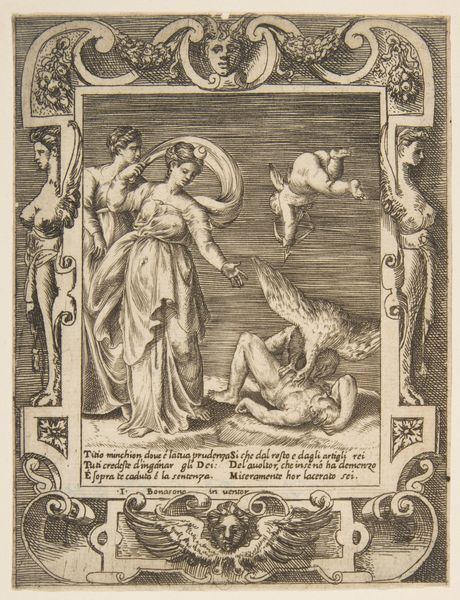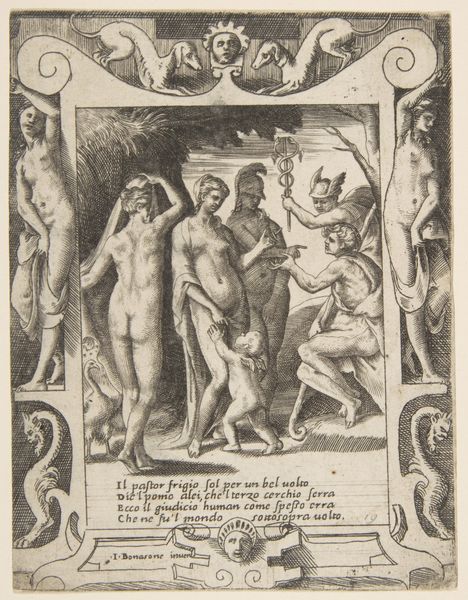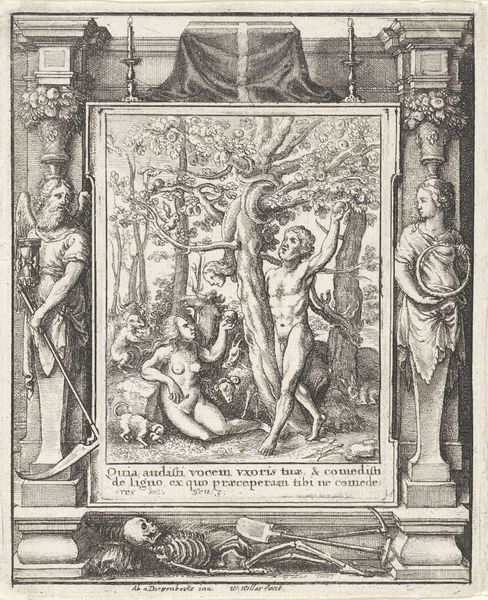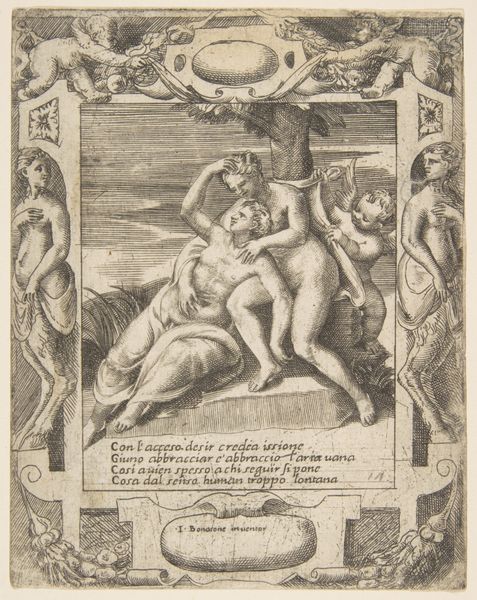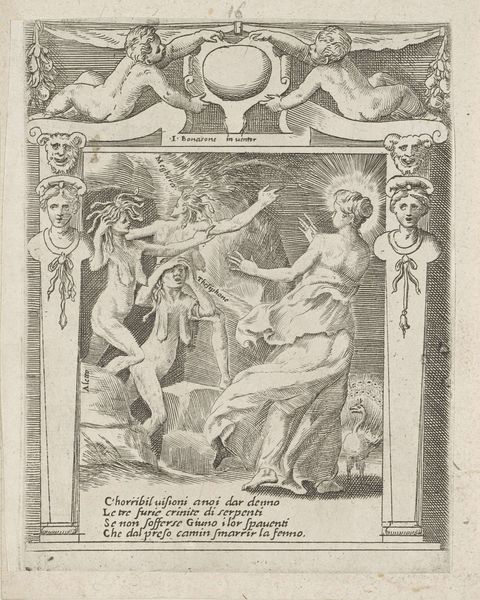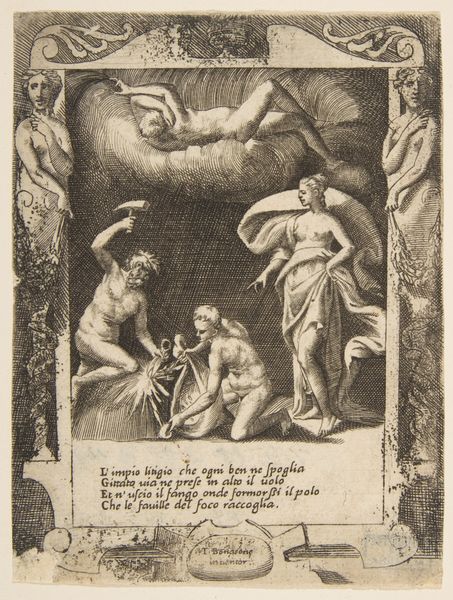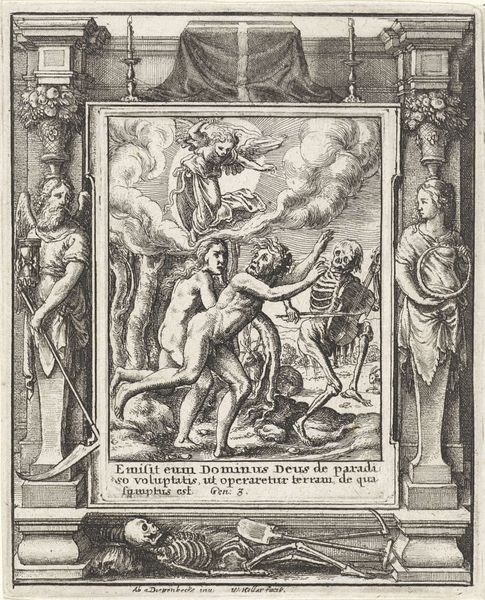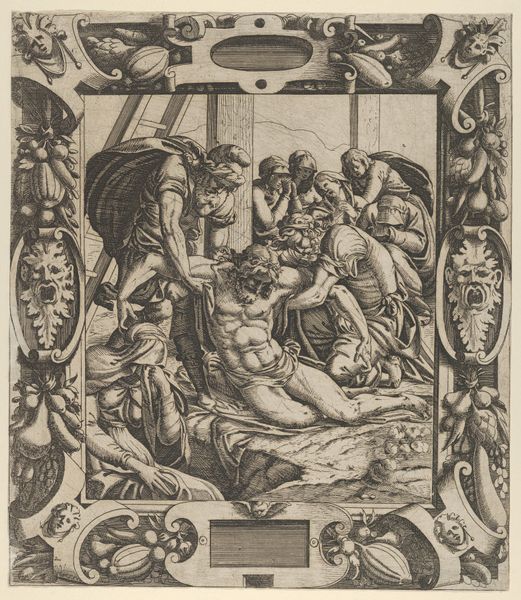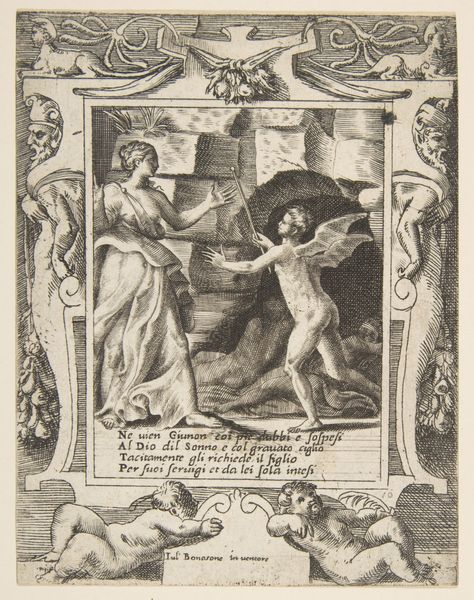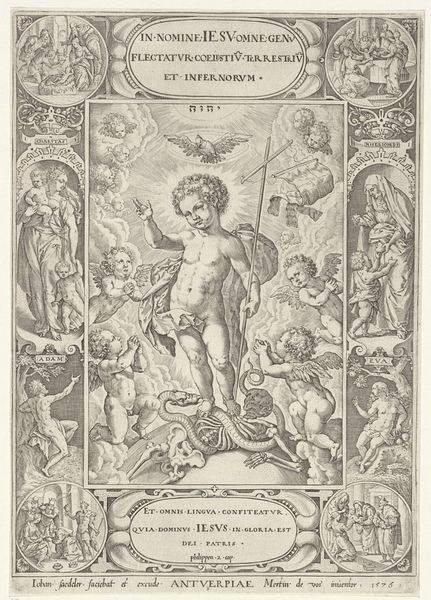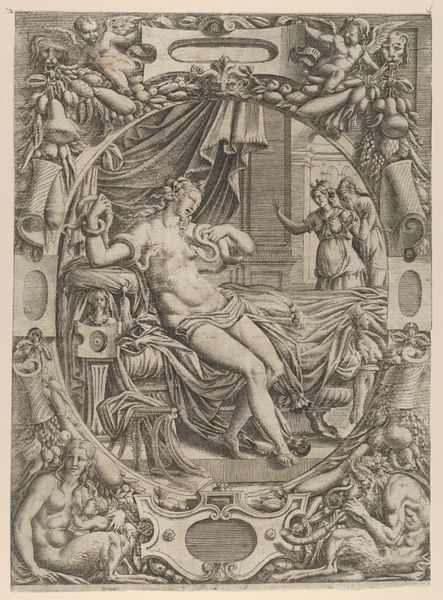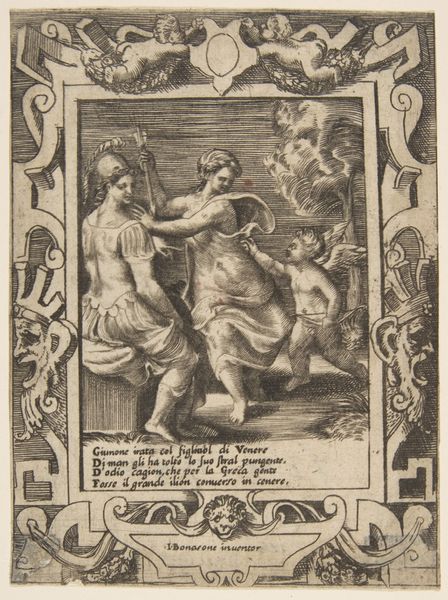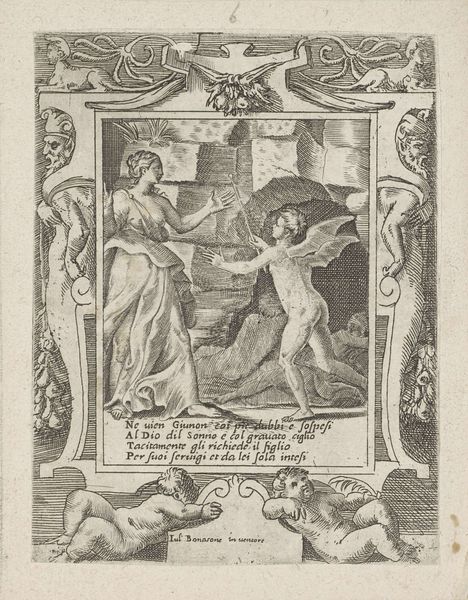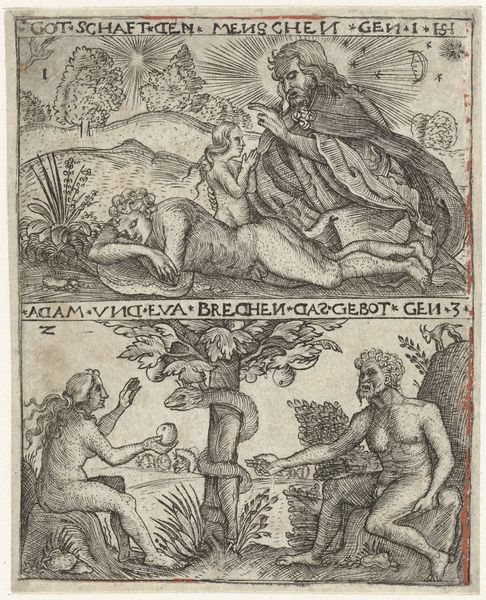
The triumph of Juno who is sat in a carriage, set within a elaborate frame, from "Loves, Rages and Jealousies of Juno" 1531 - 1576
0:00
0:00
drawing, print, engraving
#
drawing
#
ink drawing
#
allegory
#
pen drawing
# print
#
figuration
#
pencil drawing
#
history-painting
#
italian-renaissance
#
engraving
Dimensions: sheet: 5 3/8 x 4 in. (13.7 x 10.2 cm)
Copyright: Public Domain
Editor: This is "The Triumph of Juno," an engraving by Giulio Bonasone, dating from the mid-16th century. The intricate linework gives it a formal, almost regal feeling. What strikes me is the framing, the way it encloses the scene of Juno in her chariot. How do you interpret this work? Curator: It's crucial to see this image not just as a depiction of Juno, but within its historical context. The Renaissance was a period of renewed interest in classical mythology. Bonasone uses that to comment on power, gender, and societal expectations. Consider how Juno, often associated with marriage and fertility, is staged as this triumphant figure. Is it a celebration, or does it hint at the burdens and constraints placed on women even then? Editor: That’s interesting. The word ‘triumph’ seems straightforward, but you're suggesting there could be a critical perspective embedded here? Curator: Exactly. And let’s think about who the intended audience for this print might have been. How might its meaning have shifted depending on whether it was viewed in a private collection of a wealthy merchant versus being displayed in a more public setting? The very act of depicting Juno in this manner—commanding, almost austere—challenges prevailing notions of female power. Editor: So you're saying it's not just about what's visible, but who is seeing it, and where? Curator: Precisely. Bonasone prompts us to question the very idea of "triumph" – is it truly empowering, or is Juno trapped within prescribed roles? And who benefits from such depictions? Editor: That reframes everything for me. I thought it was just a classical scene, but it's clearly much more complex, tied to the social and political climate of its time. Curator: Understanding the historical backdrop allows us to see how even seemingly celebratory images can carry critical weight. Examining power dynamics—then and now—becomes central to the artwork’s enduring impact.
Comments
No comments
Be the first to comment and join the conversation on the ultimate creative platform.
